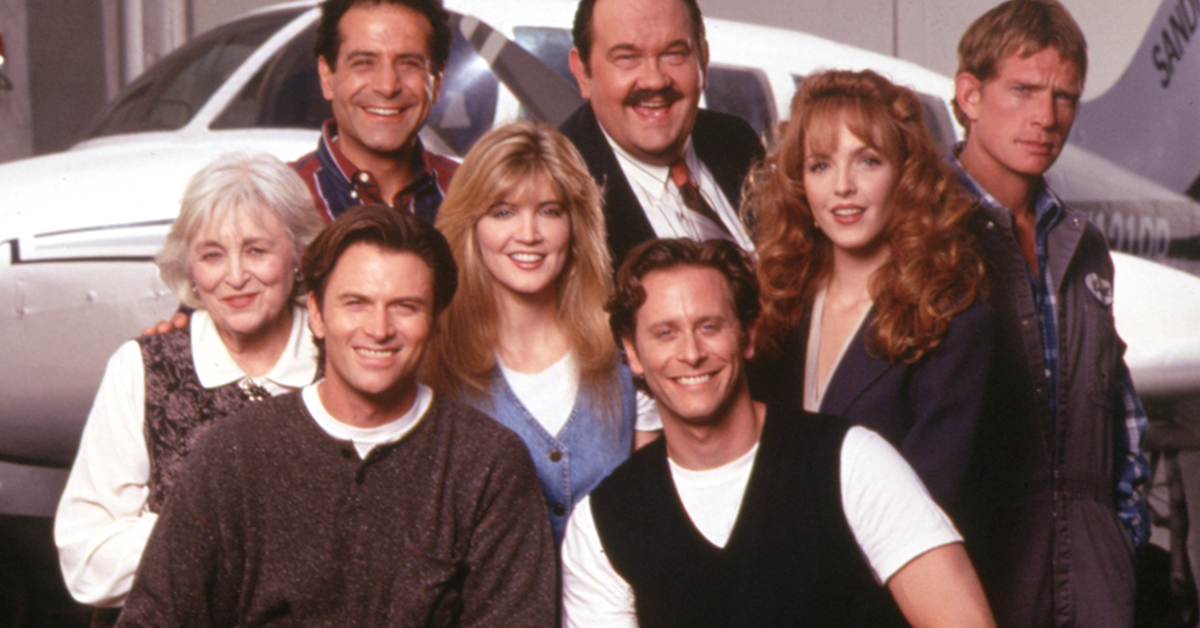The late 1950s and early 1960s were marked by an unprecedented cultural shift in the United States. Television, during this era, played a pivotal role in shaping societal norms and values, offering a reflection of American life and family dynamics. Amid the array of sitcoms, "Leave It to Beaver," which aired from 1957 to 1963, remains a cherished and timeless classic. Created by Joe Connelly and Bob Mosher, the show revolved around the Cleaver family and provided viewers with a heartwarming glimpse into the lives of suburban America during the post-war period. This comprehensive exploration takes us on a journey through the world of "Leave It to Beaver." We will delve into the show's inception, memorable characters, notable episodes, and its lasting impact on television and popular culture. We will also discuss how the Cleaver family became a symbol of the idealized American family and how the show continues to be a source of nostalgia for generations.
(Watch the video below)

The Cleaver Family: A Glimpse into 1950s Suburban Life
"Leave It to Beaver" was set in the fictional town of Mayfield and revolved around the Cleaver family, consisting of Ward Cleaver, his wife June, and their two sons, Wally and Theodore (affectionately known as Beaver). The show provided a wholesome and idyllic portrayal of family life in post-World War II America, presenting an idealized vision of the traditional nuclear family.
Ward Cleaver, played by Hugh Beaumont, was the epitome of the wise and caring father figure. As a loving husband and devoted father, he offered sage advice to his sons and taught them valuable life lessons. June Cleaver, portrayed by Barbara Billingsley, was the nurturing and understanding mother who provided a warm and comforting presence in the Cleaver household.

The two Cleaver boys, Wally (played by Tony Dow) and Beaver (played by Jerry Mathers), represented the typical sibling dynamic. Wally, the older brother, often looked out for Beaver and offered him guidance and support. Beaver, on the other hand, was curious and mischievous, frequently finding himself in humorous and relatable predicaments.
Episodic Adventures and Life Lessons

"Leave It to Beaver" followed a largely episodic format, with each episode presenting a new situation or predicament for the Cleaver family to navigate. Whether dealing with school-related issues, friendship dilemmas, or childhood mishaps, the show's stories were grounded in real-life situations that resonated with viewers of all ages.
The heart of the show lay in the life lessons imparted by Ward and June to their sons. Each episode offered valuable insights into family values, honesty, responsibility, and the importance of communication. The Cleaver family's unwavering love and support for one another served as a guiding light through the challenges they faced.
One of the show's enduring themes was the generation gap, as it often depicted the differences in perspectives between parents and their children. These moments of misunderstanding and eventual resolution allowed the show to portray the complexities of family dynamics with humor and authenticity.
Hugh Beaumont and Barbara Billingsley's on-screen chemistry as Ward and June Cleaver contributed to the show's appeal. Their portrayal of parental figures was genuine and relatable, and their interactions with Wally and Beaver exemplified the ideal parent-child relationship.
The Beaver's Charm and Endearing Innocence
Jerry Mathers' portrayal of Theodore "Beaver" Cleaver played a pivotal role in the show's success. Beaver's innocence, curiosity, and earnestness charmed viewers, making him one of the most beloved child characters in television history. Mathers' genuine and natural performance endeared him to audiences of all ages, and his catchphrases, such as "Gee whiz!" and "Aw, gee," became iconic.
As the central character, Beaver often found himself in amusing predicaments, sometimes brought about by his own innocent misunderstanding of the world around him. These misadventures were a significant source of the show's humor and provided audiences with endearing and relatable moments.
The Show's Cultural Impact

"Leave It to Beaver" was not only a beloved family sitcom but also a reflection of the social and cultural norms of its time. The show's portrayal of the traditional nuclear family and the idealized suburban life resonated with audiences during the post-World War II era.
In the 1950s and early 1960s, television played a crucial role in shaping societal norms and values. "Leave It to Beaver" was part of a wave of family-oriented sitcoms that presented an idealized version of American family life. It reinforced the prevailing gender roles of the time, with June Cleaver as the homemaker and caregiver and Ward Cleaver as the breadwinner and head of the household.

While the show was criticized by some for its portrayal of gender roles and its idealization of family life, it also received praise for its positive messages and wholesome content. The Cleaver family's unconditional love and support for one another served as a comforting and reassuring example of familial bonds.
Enduring Legacy and Syndication

"Leave It to Beaver" ended its original run in 1963, but its impact and enduring appeal have stood the test of time. The show's influence on popular culture extended beyond its initial broadcast, as it found new audiences through syndication in the decades that followed.
The show's timeless themes of family, friendship, and life lessons continue to resonate with viewers, making it a cherished classic that remains relevant to this day. "Leave It to Beaver" has become a cultural touchstone, referenced and parodied in various forms of media over the years.
The Legacy of Barbara Billingsley's Iconic Wardrobe

Barbara Billingsley's portrayal of June Cleaver was not only beloved for her nurturing character but also for her iconic wardrobe. June Cleaver's impeccable style, often characterized by dresses, pearls, and high heels, has become an enduring fashion symbol associated with the 1950s housewife.
June Cleaver's elegant and sophisticated attire represented the sartorial sensibilities of the time and added to the show's nostalgic charm. Her carefully coordinated ensembles showcased the idealized image of the perfect homemaker, even while engaging in everyday household tasks.

The show's lasting legacy and impact on popular culture led to various reunions, spin-offs, and adaptations over the years. In 1983, a television movie titled "Still the Beaver" aired, catching up with the Cleaver family years after the original series ended. The movie's success led to the revival of the series as "The New Leave It to Beaver," which aired from 1983 to 1989.
Conclusion

"Leave It to Beaver" remains a timeless and beloved family sitcom that continues to capture the hearts of viewers across generations. The show's portrayal of the Cleaver family's everyday adventures, along with its heartwarming life lessons and endearing innocence, struck a chord with audiences during its original run and has left a lasting legacy in the annals of television history.
The show's impact on popular culture extends beyond its initial broadcast, as it continues to be celebrated in syndication and through various reunions and adaptations. The Cleaver family's unwavering love and support for one another, combined with the charm and innocence of Beaver, have made "Leave It to Beaver" a cultural icon and a timeless representation of the idealized family sitcom.

As television continues to evolve, "Leave It to Beaver" remains a nostalgic and comforting reminder of a simpler time and an enduring testament to the enduring power of family values and laughter in the face of life's challenges. The Cleaver family's enduring legacy will undoubtedly continue to captivate and inspire audiences for many more years to come.



